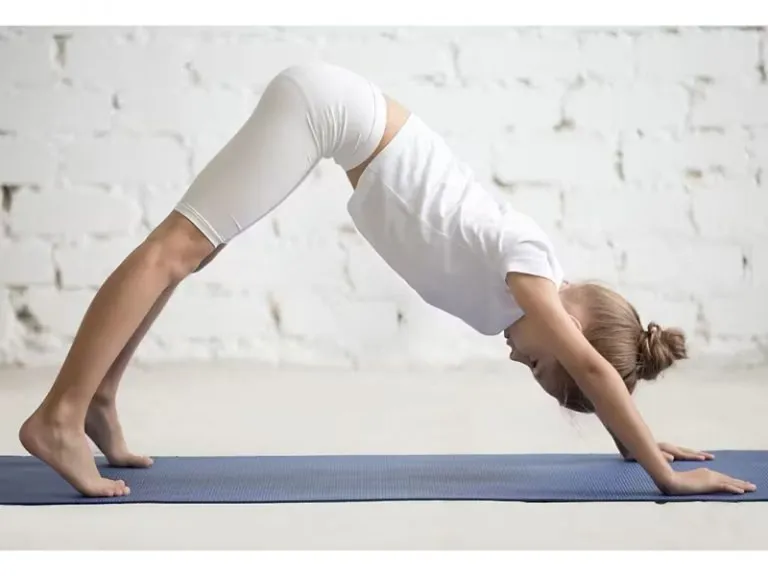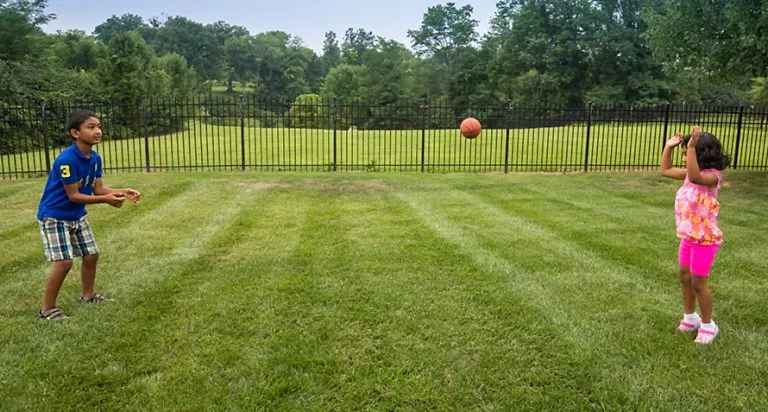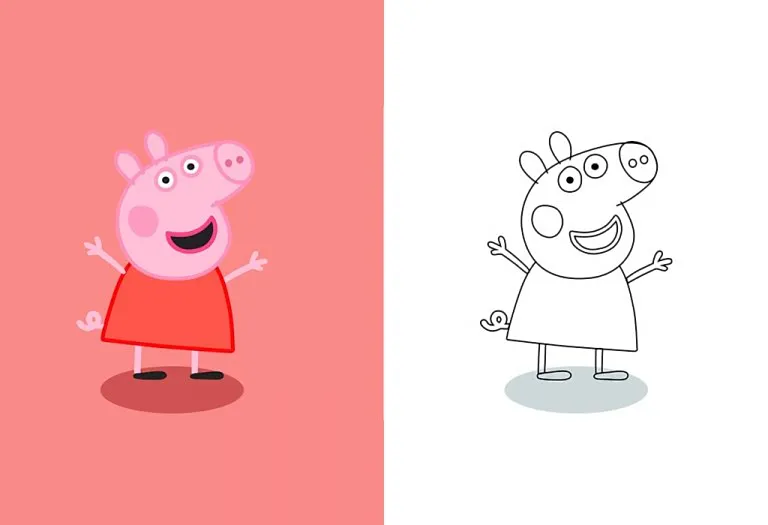Surya Namaskar for Kids – Benefits and How to Do
- Amazing Benefits of Surya Namaskar for Children
- How to Do Surya Namaskar – A Step By Step Process
- Ways to Make Sun Salutation Fun For Kids
- FAQs
Surya Namaskar is a basic practice in Yoga, traditionally done to warm up for more difficult poses and as a form of paying tribute to the sun. The sun is the source of life on earth, so ancient yogis believed that paying their respects to the sun can result in good health and increased vigour in life (1).
Surya Namaskar is a great warm-up for kids, as it stretches the entire body and helps move every joint and major muscle group present. This smooth transition between the poses helps one concentrate and focus and can have a marked effect on the creativity and focus levels of the child. In this article, let us take a look at the methods of making Surya Namaskar for kids more fun, as well as the steps to performing it.
Amazing Benefits of Surya Namaskar for Children
There are many benefits that come with the regular practice of sun salutation, especially in children. The foremost one is that the practice addresses certain parts of the body in a comprehensive manner, including most joints and the major muscle groups. Therefore, the poses and the actions help tone the muscles of the body well. Also, the Surya Namaskar makes changes within the body of the child. Not only are the outer sets of muscles given a nice workout, but the inner muscles like the solar plexus and navel are also worked on during the activity. If the practice is continued regularly in children, it has the potential to prevent more than a hundred ailments too. Some of the benefits of Surya Namaskar are (1):
1. Improved Blood Circulation
Inhalation and exhalation are particularly focused upon, so the lungs are constantly ventilated. This means that the blood in the body becomes highly oxygenated and purified in a short span of time.
2. Increasing Fitness
If the poses are carried out in a smooth and quick manner, you will find that the salutation itself is a great cardio workout. Excess weight around the stomach is trimmed off easily, and you can help your child become more active easily (4).
3. Benefits the Skin and Hair
The activity improves blood circulation, so the skin automatically becomes more glowing and radiant at a young age.
4. Anti-Anxiety
The salutation helps the children focus and improves their memory, and can have a great calming effect on the entire body. Any exam related stresses can be completely eliminated by practising the Surya Namaskar poses regularly (2).
5. Optimised Metabolism
Another effect of the improved blood circulation is that oxygen and nutrients reach every organ wherever they are required, which means that the metabolism of the child increases to the optimum levels quickly.
6. Improves Digestion
The twisting and bending movements encourage better circulation to the stomach and intestines, aiding in digestion and detoxification. These movements help to relieve constipation, promote regular bowel movements, and prevent bloating. It can also improve the absorption of nutrients, leading to better overall health (3).
7. Develops Mental Focus
Surya Namaskar requires children to synchronise their breath with the movements, which naturally improves concentration and mindfulness. To perform the sequence effectively, children must focus on each posture and how their body feels in the moment.

How to Do Surya Namaskar – A Step By Step Process
Here is a detailed breakdown of the steps of Surya Namaskar for anyone wondering how to do Surya Namaskar at home (5).
1. Prayer Pose
Place your feet close together and balance your weight on your feet equally. Expand your chest, and as you inhale, lift your arms up from both sides- bring them together in front of the chest in the prayer position as you exhale.
2. Arms
Then, inhale again and lift your arms up and back with the biceps close to the ears. Make sure to stretch your body in its entirety, from the heels to the tips of the fingers.
3. Hand to Foot
Bend forward with the spine erect as you exhale, and bring your hands down to the floor beside the feet.
4. The Horse
As you inhale, push your right leg back as far as possible. Then, look up and bring your right knee to the floor.
5. Stick Pose
Similarly, take the left leg back while inhaling and come to the plank position with your body in a straight line and your arms perpendicular to the floor.
6. Salutin
Gently, exhale and lie down with your knees touching the floor first. Raise your posterior slightly- eight points of the body (two hands, two feet, two knees, chest and chin) must be the only points of contact between your body and the floor.
7. Cobra
Raise your chest up, with your elbows bent and your shoulder being far from the ears. Stretch as much as you can, and ensure that your chest pushes forward when you breathe in. When you breathe out, push your navel down gently.
8. Mountain
Lift the hips and the tailbone up with the palms still on the floor, so that your body forms an inverted ‘V’ shape. Ensure that your heels touch the ground so that your body remains stretched.
9. Horse Pose
From the inverted V, get back to the equestrian pose with the right leg backwards and the chin looking up again in one fluid movement. Stretch your body as much as possible.
10. Hand-to-foot pose
In a reverse manner, make your legs perpendicular with your hands placed near your feet on the ground. You can bend your knees if necessary, but keep your body as straight as possible.
11. Raised Arms
Continuing the reverse trend, roll the spine out while exhaling and lift your hands up over your head. Stretch up more, rather than stretching backwards.
12. Relax
Exhaling slowly, bring your arms back down, and observe the various sensations coursing through your body.

The answer to how many Surya Namaskar per day depends upon your reasons for the activity. If you want your child to improve his mental skills rather than improving his fitness, make him do it 3 or 5 times as slowly as possible. If you meant it as a cardio exercise, you can do it as many times as possible.
Ways to Make Sun Salutation Fun For Kids
Sun salutations for kids can be a boring ordeal, especially because they will not understand how beneficial it is. In such cases, there are a number of ways you can make the activity more fun for your children:
1. Follow My Body
To make it more fun, just put on some great music and encourage your children to follow the poses as much as they can. Let them cut loose and add their own variations, and have fun in the process.
2. The Wave
Stand in a circle, and start doing the salutation. Tell the person next to you in one direction to follow what you are doing, and the person on his right to follow him in turn. The result is a wave, which is more fun to watch and requires more concentration to pull off.
3. Sun Dance Story
To make the activity more interesting, you can make up a story that relates to each pose you are doing. This is bound to get the attention of the children and helps them focus on the poses themselves.
4. Human Mandala
Place yourselves in a circle, and stay connected via arms, feet or other parts of the body. Do the poses in unison, so that the result is a fluid movement in unison by everyone in the circle.
5. Saluting Each Other
Pair up the children and make each pair face each other. Then encourage one of each pair to make up a new set of poses, and the other has to follow his partner. Switch roles as the song changes in the background.
6. Saluting for Love
Encourage each child to individually make up some poses in honour of something they love, and make each child show off their poses in front of everyone. The viewers have to guess what item they are trying to salute.
7. Sun Dance Song
Make up some sort of a song that goes well with the poses, so that the children can sing along while they practice the sun salutations.
FAQs
1. How often should children practice Surya Namaskar?
Children can practice Surya Namaskar daily for about 5 to 10 minutes, starting with a few rounds and gradually increasing the duration as they build strength and stamina. Consistent practice will yield better results over time, helping children experience the full benefits of the practice.
2. What age is appropriate for children to start practising Surya Namaskar?
Children can begin practising Surya Namaskar as early as 5 to 6 years old, with proper guidance. It’s important to start with basic poses and gradually introduce the full sequence as they become more comfortable. Ensure that the practice is age-appropriate and fun, avoiding any forceful movements.
The Surya Namaskar is an extremely healthy activity for children, as it can have a range of physical and mental benefits as the child grows up. Even though it may not appear to be a fun activity from the perspective of the child, you can encourage them to practice every day using any one of the fun activities mentioned above.
References/Resources:
1. Prasanna Venkatesh. L, Vandhana. S; Insights on Surya namaskar from its origin to application towards health; PubMed Central; https://pmc.ncbi.nlm.nih.gov/articles/PMC8814407/
2. Benefits of Surya Namaskar; The Art of Living; https://www.artofliving.org/in-en/yoga/beginners/sun-salutation-benefits
3. Dr. Gangwal. J, Dr. Kholiya. S; Importance of Surya Namaskar in daily life; International Journal of Advances in Engineering and Management; https://ijaem.net/issue_dcp/Importance%20of%20Surya%20Namaskar%20in%20daily%20life.pdf
4. Patni. N. K, Devi. D, Jain. S; Surya Namaskar, Benefits in the Context of Physiological Perspective; International Research Journal of Ayurveda & Yoga; https://irjay.com/index.php/irjay/article/view/68
5. Surya Namaskar; Kerala Tourism; https://www.keralatourism.org/yoga/popular-asanas/surya-namaskar
Yoga for Kids
Meditation for Kids
Easy to Do Stretches for Kids
Best Brain Gym Exercises for Children
Was This Article Helpful?
Parenting is a huge responsibility, for you as a caregiver, but also for us as a parenting content platform. We understand that and take our responsibility of creating credible content seriously. FirstCry Parenting articles are written and published only after extensive research using factually sound references to deliver quality content that is accurate, validated by experts, and completely reliable. To understand how we go about creating content that is credible, read our editorial policy here.























